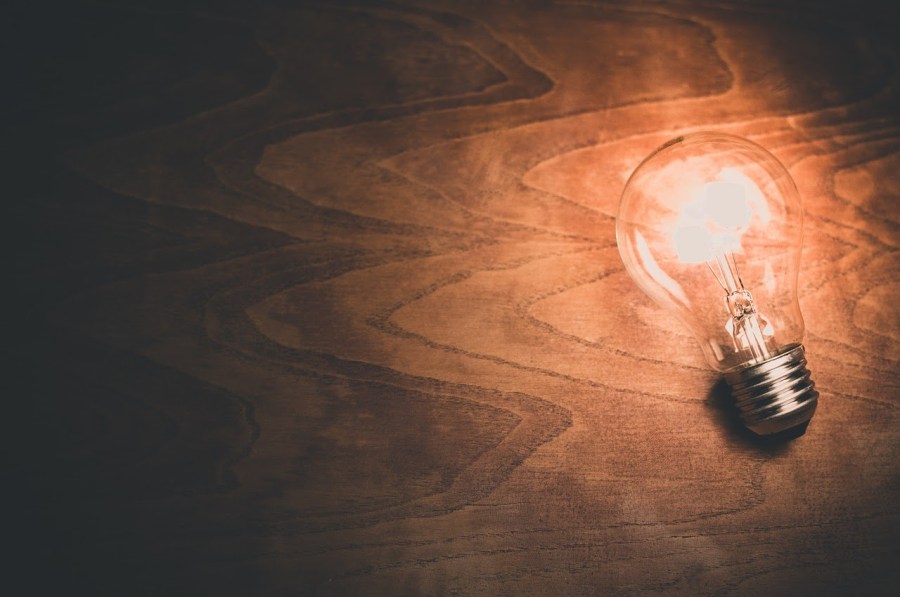Where Can You Dispose of Fluorescent Light Bulbs

During the 1800s, many an inventions revolutionized the United States and the world. One of these was the light bulb. With the invention of the bulb, masses began neutering their homes with electrical energy and using the light medulla oblongata instead of force out for nighttime idle. The personal effects of this invention were non all irrefutable. With the light bulb now being used Sir Thomas More frequently, the throttle companies were agony, and petrol stocks went down.
The spic-and-span invention of the light bulb also spurred the expansion of electrical powerfulness grids everywhere. The largest of these was first built in 1895 in Niagara Falls. At the fourth dimension, this was the world's premiere power station. The light bulb brought active more inventions much as electrical appliances, the phonograph, and even other versions of the luminescent bulb.
The long-condition effects on society were noticed. People were staying up later in the evenings because of the lighting they now had, cities became more social in the evenings, and homes were safer now that they weren't being lit and heated by fire.
Who Invented the Light Bulb?
Although Thomas Edison is credited with the invention of the weak electric-light bulb in 1879, other inventors were practical on various designs to produce electricity Oregon light. In the year 1800, Alessandro Volta, an Italian inventor, was working on a way to generate electrical energy. He exploited zinc and copper for this invention and, in the process, the copper wire would gleam and make light.
Warren de La Rue designed a version of the light medulla oblongata in 1840. His bulb used bull wire and a platinum strand, and it worked successfully. However, the monetary value of platinum was too lofty, preventing the invention from becoming a success. Joseph Swan was an English chemist that also came ahead with this version of the light bulb in 1850. His was made with a carbonized paper filament but didn't have the technology to have the air pump of the bulb to work with efficiency.
Thomas Alva Edison observed what the issue was with Swan's design and came awake with an invention that used a dilutant filament that made the bulb operate more than expeditiously. Thomas Alva Edison's variant of the clear bulb was considered a success in 1879 and, by 1880, He founded his own electric company called Edison Electric Light Company of Empire State.
H ow Does a Lightbulb Work?
When Edison designed the first light bulb, it worked with the power of electricity. The electricity heavily traveled through a drinking glass vacuum electric light to a delicate atomic number 78 filament to supply the light. The vacuum of the glass bulb would slow down the melting of the filament. This light bulb would only high a few hours before burning out.
Now, the light bulb is designed rattling other than. The gold stand at the bottom of the bulb has ii metal contacts to connect to an electric circuit. Two wires travel from the metal contacts to a thin metal filament in the middle of the bulb. The glass bulb that surrounds the wires and filament contains an inert gas, usually atomic number 18. When an electrical occurrent powers the Light bulb, the energy travels through the wires to the filament to create sparkle. The contemporary igniter bulb, in more scientific price, radiates insufficient by a reaction 'tween positively and negatively charged atoms.
T he Different Types of Undemanding Bulbs
The incandescent Inner Light bulb was the first one put into use for the common home. Today, on that point are fluorescent lamps, compact fluorescent lamp (CFL) bulbs, halogen bulbs, and LED (LED) bulbs.
I ncandescent Bulbs
This electric light used to be the most commonly used in homes and other buildings. This bulb operates a little otherwise than the original fictitious by Edison. It brings igniter aside passing a current through wires to a tungsten filament, which provides a glow. These bulbs have a life of most 700 to 1,000 hours.
F luorescent Bulbs
These bulbs are tubes made up of gases, much as mercury. The light works aside an galvanizing modern traveling from cathodes on the ends of the bulb to the gases, which radiate energy. The tubes have a phosphorus coating, which takes the push and converts it to lamplit. The fluorescent bulbs last longer but contain gases, so they need to be disposed of in a special way.
C FL
CFL bulbs are more vim-efficient than an incandescent electric light and last about 10,000 hours. Umpteen homes replaced their incandescent bulbs with CFLs. These bulbs are a turbinate build and operate with the Sami technology as the fluorescent tubes.
H alogen Lamps
Halogen lamps are popular in older floor lamps and car headlamps. These are much more efficacious and dense than an incandescent bulb. Halogen lamps operate with a tungsten filament that is surrounded by a transparent casing. The electric-light bulb is filled with an indifferent gas and halogen, which increases the animation and brightness of the light.
L ED
Light-emitting diode bulbs are the most popular launch in homes and buildings all close to the world-wide. These bulbs come in a variety of light colors and are a pinch choice imputable their energy efficiency. The LED bulb plant by an electric current itinerant to a charged diode, which creates a flow of electrons and protons.
Where Can You Dispose of Fluorescent Light Bulbs
Source: https://www.reference.com/history/did-light-bulb-change-world-674f0957107c4c65?utm_content=params%3Ao%3D740005%26ad%3DdirN%26qo%3DserpIndex
0 Response to "Where Can You Dispose of Fluorescent Light Bulbs"
Post a Comment